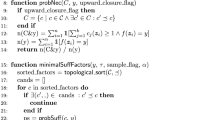Abstract
In a recent reply to our article, “What is Interpretability?,” Prasetya argues against our position that artificial neural networks are explainable. It is claimed that our indefeasibility thesis—that adding complexity to an explanation of a phenomenon does not make the phenomenon any less explainable—is false. More precisely, Prasetya argues that unificationist explanations are defeasible to increasing complexity, and thus, we may not be able to provide such explanations of highly complex AI models. The reply highlights an important lacuna in our original paper, the omission of the unificationist account of explanation, and affords us the opportunity to respond. Here, we argue that artificial neural networks are explainable in a way that should satisfy unificationists and that interpretability methods present ways in which ML theories can achieve unification.
Similar content being viewed by others
Data Availability
Not applicable.
References
He, K., Zhang, X., Ren, S., & Sun, J. (2016). Deep residual learning for image recognition. IEEE Conference on Computer Vision and Pattern Recognition (CVPR), 2016, 770–778.
Kitcher, P. (1981). Explanatory unification. Philosophy of Science, 48(4), 507–531.
Kitcher, P. (1989). Explanatory unification and the causal structure of the world. In P. Kitcher & W. C. Salmon, Scientific explanation (pp. 410–505). University of Minnesota Press.
Prasetya, Y. (2022). ANNs and unifying explanations: Reply to Erasmus, Brunet, and Fisher. Philosophy & Technology (in press).
Funding
Author AE declares no funds, grants, or other support that were received during the preparation of this manuscript.
Author TDPB has received support from the Leverhulme Trust.
Author information
Authors and Affiliations
Contributions
AE and TDPB cowrote and approved the first draft of this article.
Corresponding author
Ethics declarations
Ethics Approval and Consent to Participate
Not applicable.
Consent for Publication
Not applicable.
Conflict of Interest
The authors declare no competing interests.
Additional information
Publisher’s Note
Springer Nature remains neutral with regard to jurisdictional claims in published maps and institutional affiliations.
Rights and permissions
About this article
Cite this article
Erasmus, A., Brunet, T.D.P. Interpretability and Unification. Philos. Technol. 35, 42 (2022). https://doi.org/10.1007/s13347-022-00537-z
Received:
Accepted:
Published:
DOI: https://doi.org/10.1007/s13347-022-00537-z




